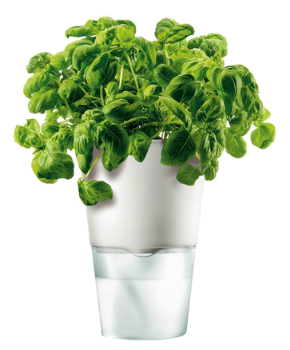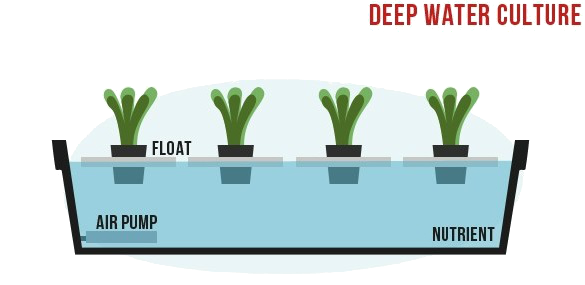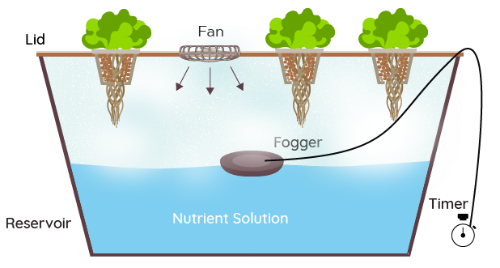In this 200s How-to-Grow Cannabis article, Growers Network discusses hydroponic methods that might be worth considering.

Hello growers! In our 100s level articles, we primarily focused on growing in a soil, a time-tested and traditional method of growing. There’s absolutely nothing wrong about growing in soil, and if it’s all you want to do and all you want to be comfortable with, then that’s ok. However, hydroponic methods offer a lot of unique benefits that you won’t get from soil, so we’ll go over a few different types, and let you decide what interests you.
Why hydro?
As we mentioned in our last article focused on different mediums, hydroponic growing styles afford a level of control that growing in soil does not. You can custom tailor exactly how much water your plant gets, how many nutrients your plant receives, the exact pH of your system, and on top of all that, you can record tons of data for your grow journal. This data can tell you how specific strains react to specific situations, and can help inform future grows.
In soil, you rarely get this kind of control or this kind of data. There’s more guesswork involved and a stronger reliance on your gut feelings. This isn’t necessarily bad, but it may prove difficult or tedious as you ramp up the size of your grow.
Additionally, hydro growing styles and growing mediums offer a unique chance to control and monitor pests and diseases. In soil grows, you generally can’t get a good glimpse at what’s happening in the root zone of your plants. It’s a mysterious black box. But in hydro grows with certain media such as rockwool, you absolutely can take a peek at what’s going on at the root level, removing some of the guesswork involved.
One other benefit of hydro that becomes really important on a commercial scale is that hydro growing mediums and growing styles can reduce the amount of space your plants take up. In traditional soil, plants roots need to spread out a much greater distances in order to get sufficient resources, and may end up root-bound if there’s not enough space. But with certain hydro growing styles, the required amount of space can be decreased. If you’re growing indoors, this can be a massive boon.
Hydro Growing “Styles”
In this section we’ll go over a few of the different types, how they act, and their pros and cons.
First though, we should cover the issue of what is sometimes called “Drain-to-waste” hydro growing. Essentially, almost all hydro systems can be designed to be closed-loop or open-loop. A closed-loop system will recirculate and reuse nutrient water, although it requires more effort to maintain. An open-loop system, or “drain-to-waste” will use nutrient water once and drain it off - either to the sewer system or a barrel which does not cycle back into the system.
As you can probably ascertain, closed-loop systems use less water and are more environmentally-friendly, but require more maintenance. Open-loop systems are easier to manage, but waste more water. Most municipalities and counties that regulate water input and output will prefer closed-loop systems or strongly encourage them.
Static Hydro
Perhaps the simplest method of growing hydroponically, this method takes an opaque bin or container, fills it with nutrient water, and dips the plants roots in the water. All light to the water is blocked to prevent the formation of molds and algae.

Pros:
- Simple
- Cheap, no electricity required
- Low Maintenance, no moving parts
- Good for small plants
Cons:
- Water oxygenation is poor, roots will only get so deep into the water
- Plants cannot grow beyond a small size
- Relatively little control
Deep Water Culture
Deep water culture is like a more-advanced form of the passive hydro system. Essentially, the plants and their media are set into a giant floating “raft” that is suspended over a relatively large pool of water that the roots dip into. The water is oxygenated with air stones and air diffusers, and the water is typically circulated via a propeller or pump. The water can be regularly monitored and nutrients or water added as needed. This method operates continuously.

Pros:
- Relatively simple operation
- Minimal electricity usage
- Only a few moving parts
- Easily scalable
Cons:
- Long power outages or equipment breakages can cause plant roots to drown
- Initial setup requires a fair amount of investment and water
- Water oxygenation is ok, but will be the limiting factor for plant growth
Ebb-and-Flow
Ebb-and-Flow, also called Flood-and-Drain, is a hydroponic method where the growing medium and plant roots are periodically flooded with nutrient solution that is pumped up from below via a mechanical pump. This method requires flood trays, pumps, a reservoir or reservoirs, and typically operates on a timer.

Pros:
- Good water oxygenation due to pumping
- Nutrient solution can be regularly monitored and changed in reservoir
- Plant size is theoretically unlimited
- This method is very gentle on roots
Cons:
- Water pumps are subject to breaking, as are any mechanical parts.
- Tubing and trays may leak due to wear and tear
- This method only works with certain mediums (that don’t get flushed out with water) and may require more specific equipment
- This method requires electricity. While short power outages aren’t a big deal, long power outages could result in problems.
Nutrient Film Technique
Nutrient Film technique, sometimes called continuous flow, suspends plants and their media in a tube (typically PVC) that is constantly cycling nutrient water. The water is cycled through a reservoir where it can be checked for nutrients, and then cycled back to the plants. This method operates continuously.

Pros:
- Excellent oxygenation, the plants’ roots will rarely have any issues with oxygen
- This growing method tends to accelerate the growth rate of plants, as they can take however much water and nutrients they need.
Cons:
- This method is expensive to set up.
- This method is very susceptible to power outages. Any power outage could cause serious damage to the plants.
- The water pump can break and cause problems.
- The lines and tubes connecting the system can become clogged.
- Difficult to scale up or down.
- Plants towards the end of the tubes get access to fewer nutrients, as the plants at the front of the tubes take up what they need first.
Drip Emitter
Drip emitters are a commonly-used system in both hydroponic and soil grows where a small tube of water with an emitter at the end is plugged into the soil or medium where the plant grows. Due to water pressure in the water line, a “drip” is constantly being emitted, feeding the plant. Nutrients can be added through the line or added separately. Runoff can be cycled back into a reservoir, or run to waste. This method operates continuously, and relies on water pressure. Alternatively, it can be set to run on timers.

Pros:
- Simple, relatively easy to operate
- Relatively cheap to implement
- Water oxygenation is great.
- No electricity required, just plumbing
- Easily scalable.
Cons:
- Has no sense for the amount of water plants need, and can overwater or underwater the plants pretty badly if not set properly.
- Wear and tear to the water lines can cause problems further down.
Aeroponics/Fogponics
Aeroponics is a unique hydroponic method of growing where the plant is suspended in a closed container which is regularly misted or fogged with nutrient water. The roots are held in this fog and take nutrients as needed. The system operates based on sensors and controllers to prevent over- and underwatering.

Pros:
- Water oxygenation is impossible to beat.
- Plants grown this way do not suffer transplant shock.
- Water is used extremely efficiently.
- Does not require a medium.
- Diseases and pests generally cannot survive these conditions.
- Does not require gravity (not a particular benefit to most growers, but hey, it’s important to NASA)
Cons:
- Microbial inoculants provide very limited benefits with this method.
- Electrical outages can cause plant roots to dry out quickly.
- Misters and sprayers may tend to clog and require regular maintenance.
- System requires careful monitoring to prevent roots from drying out or becoming soaked. As such, the system is typically more expensive to implement.
Conclusion
We didn’t mention a few types of hydroponic growing methods (top-fed deep water culture, passive sub-irrigation, rotary systems, etc), but this list covers the vast majority of hydroponic growing methods you’ll encounter in most Cannabis grows. If you have a favorite method, please let us know in the survey below or on the forums!
10 Best Gift Ideas for Cannabis Connoisseurs and Growing Aficionados (2022)
December 7, 2022Developing and Optimizing a Cannabis Cultivation System
December 14, 2021Dealing with Insomnia: How Can CBD Help?
December 10, 2020Your Guide to Sleep and CBD
December 7, 2020
Do you want to receive the next Grower's Spotlight as soon as it's available? Sign up below!

Do you have any questions or comments?

About the Author
Hunter Wilson is a community builder with Growers Network. He graduated from the University of Arizona in 2011 with a Masters in Teaching and in 2007 with a Bachelors in Biology.